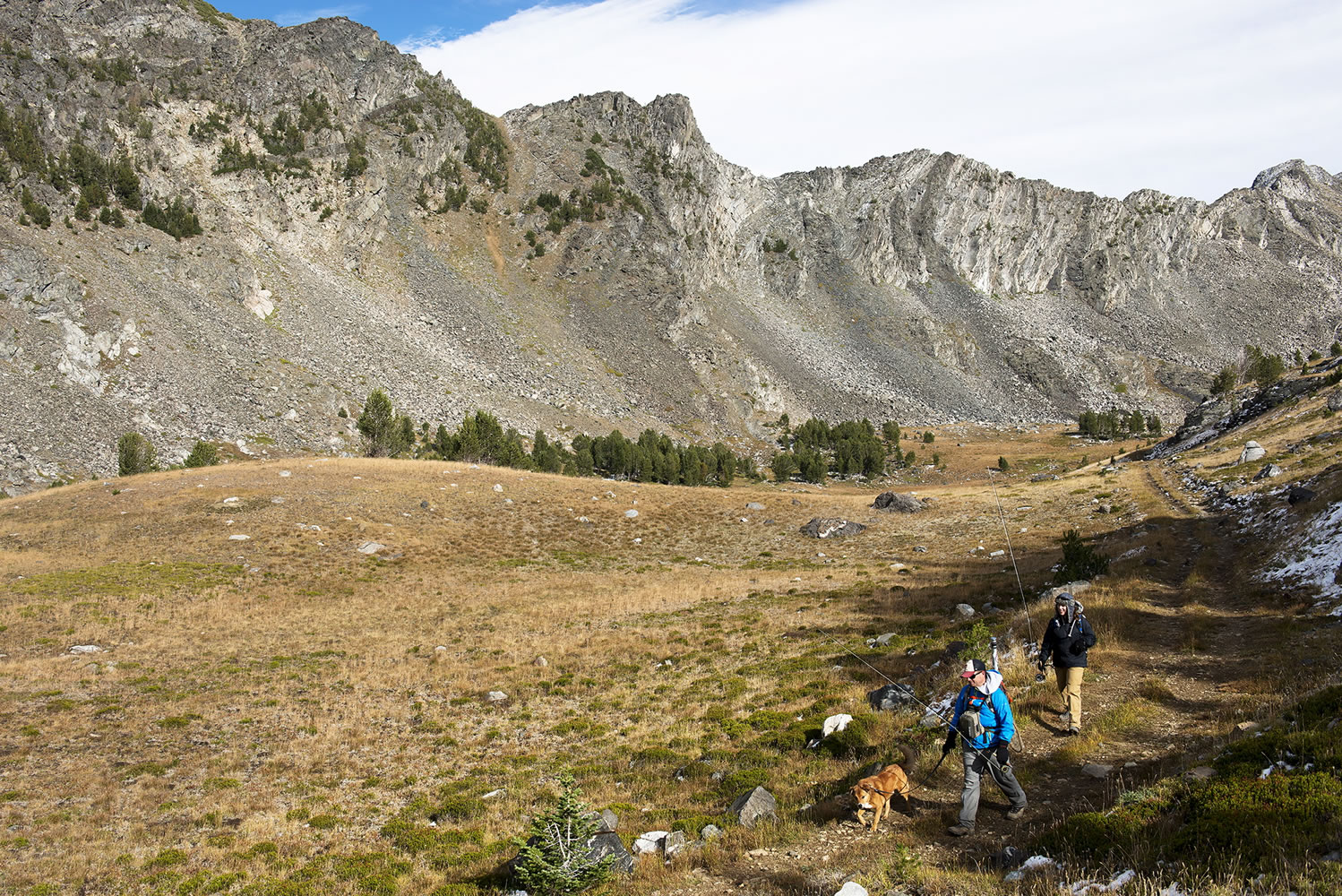TWIN BRIDGES, Mont. — Rising on the western horizon and visible from city limits, the Tobacco Root Mountains provide the palette for endless summer sunsets. Hollowtop Mountain, the highest peak in the range at 10,604 feet, looms above the small town of Pony less than an hour from downtown Bozeman.
But for all their splendor, the Tobacco Roots don’t attract the large numbers of recreationists who head to the Gallatin, Absaroka and Madison ranges each summer. And it was for that reason that I set out recently to explore the range with friends.
Take a look at the Montana Atlas & Gazetteer and you might be surprised by the Tobacco Roots. For a relatively small mountain range the Tobacco Roots pack a serious recreational punch. From the east, the Louise Lake National Scenic Trail and the Potosi Trail offer well-established routes from which to explore the mountains. From the north, the Curly Lake Trail presents mountain bikers with a true challenge. And from the west and south numerous Forest Service roads offer access deep into the hills.
I left Bozeman with Josh Bergan and Liz Juers, of Belgrade, at 10 a.m. on a Sunday. Kato and Bogues made up our canine contingent. We’d picked a route on the west side of the range that offered access to several mountain lakes reputed to hold cutthroat trout.
We began hiking just after noon following a rough-and-tumble ride up a four-wheel-drive road. For once, my instincts served me well and I pulled off the road before the radiator overheated or I bottomed out. We left the vehicles in a hollow along the road and donned our backpacks for the hike.
The Tobacco Root Mountains have a history of gold mining. From the 1880s to 1930s the range was actively mined and numerous relics from the era exist in the Tobacco Roots. The range lies primarily within Beaverhead Deerlodge National Forest and many mining claims still exist within the forest boundary. Along the trail we passed old foundations, log bridges and other evidence that offered a glimpse of the area’s mining past.
Origin unknown
While the Corps of Discovery passed by the Tobacco Roots, Lewis and Clark did not name the range in their journals. The first reference to the range was made by geologist Ferdinand Vandeveer Hayden, who led survey expeditions to the Rocky Mountains in the late 19th century. Hayden referred to the Tobacco Roots as the South Bowlder Range in 1873. Atlases in the early 1900s referred to the mountains as the Jefferson Range.
The first references to the Tobacco Root Mountains were in mining reports in the 1910s. By the 1930s, the Montana Bureau of Mines and Geology, forest and highway maps were using the Tobacco Roots name. The origin of the name is unknown.
The Tobacco Roots have 43 peaks over 10,000 feet. Steep trails in the range can make for some difficult backpacking and the incline on our hike quickly got the blood flowing.
After a half-hour of hiking we reached a meadow that provided spectacular views of Sunrise Mountain. Snow swept down the talus slopes to the stands of whitebark pine and Douglas fir.
“That’s incredible,” Josh said as we gazed at the summit.
I looked hard to spot a mountain goat to no avail. The summit looked a heck of a long ways up and the snow made the approach all the more intimidating.
We pushed above the meadow to a small mountain lake. The outlet was dam controlled, undoubtedly for mining purposes a generation ago. The lake dropped off quickly and small cutthroat trout eager to take a fly came from the depths to oblige our offerings.
There are more than two dozen mountain lakes in the Tobacco Roots and many hold fish.
After catching a few cutthroat trout we put our packs back on and hit the trail. We ascended a steep section of rocky terrain before arriving at a ridge beneath Sunrise Mountain. On the backside of the peak a small glacier hung in the rocks over Sunrise Lake. The Tobacco Roots are a heavily glaciated range.



